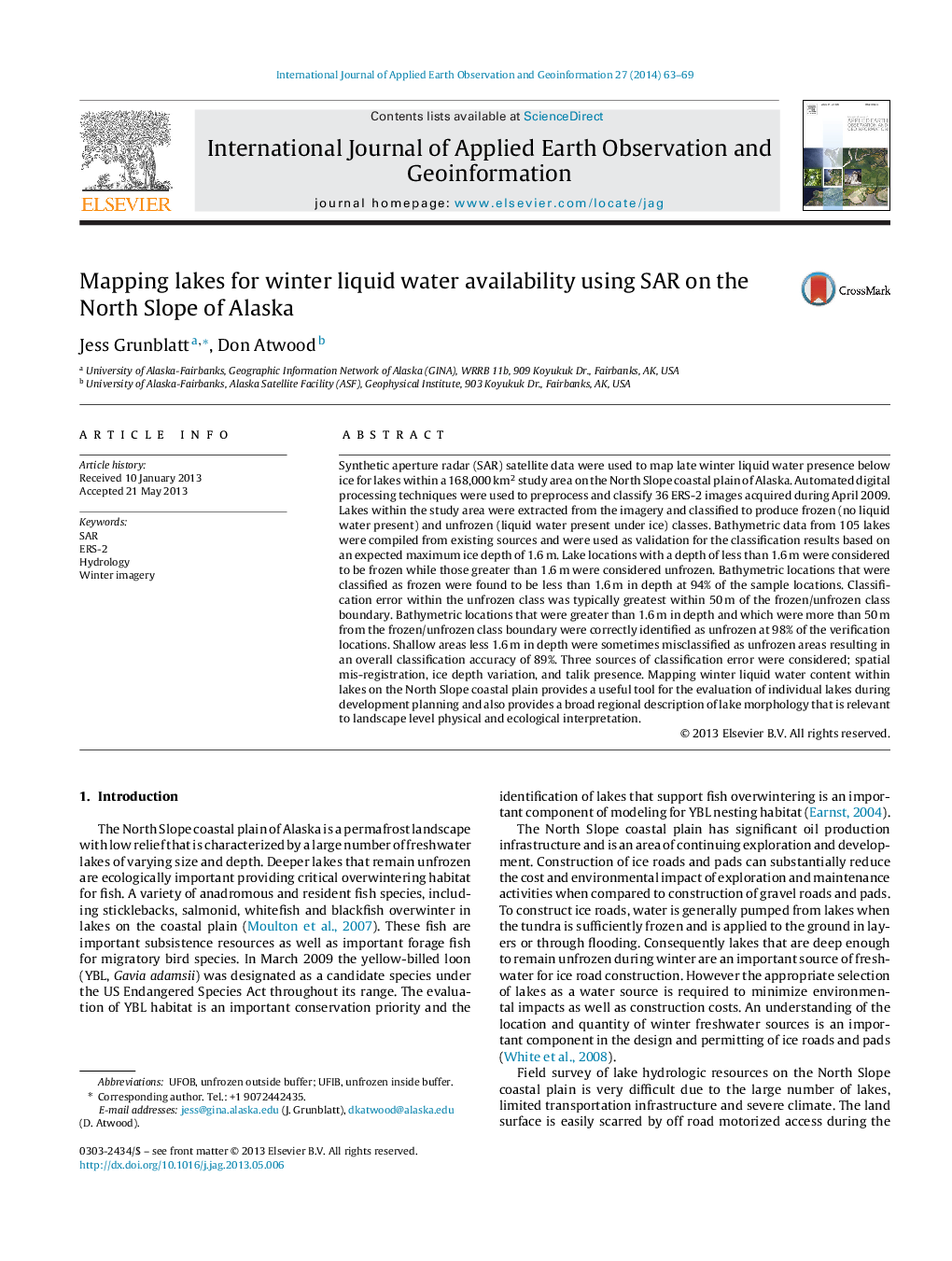| Article ID | Journal | Published Year | Pages | File Type |
|---|---|---|---|---|
| 4464810 | International Journal of Applied Earth Observation and Geoinformation | 2014 | 7 Pages |
•Classify SAR images to map late winter liquid water availability under ice in lakes.•Methods applied for large 168,000 km2 study area on Alaska's North Slope.•Classification accuracy for late winter liquid water availability under ice was 89%.•Classification provides a hydrologic parameter for ecological characterization.
Synthetic aperture radar (SAR) satellite data were used to map late winter liquid water presence below ice for lakes within a 168,000 km2 study area on the North Slope coastal plain of Alaska. Automated digital processing techniques were used to preprocess and classify 36 ERS-2 images acquired during April 2009. Lakes within the study area were extracted from the imagery and classified to produce frozen (no liquid water present) and unfrozen (liquid water present under ice) classes. Bathymetric data from 105 lakes were compiled from existing sources and were used as validation for the classification results based on an expected maximum ice depth of 1.6 m. Lake locations with a depth of less than 1.6 m were considered to be frozen while those greater than 1.6 m were considered unfrozen. Bathymetric locations that were classified as frozen were found to be less than 1.6 m in depth at 94% of the sample locations. Classification error within the unfrozen class was typically greatest within 50 m of the frozen/unfrozen class boundary. Bathymetric locations that were greater than 1.6 m in depth and which were more than 50 m from the frozen/unfrozen class boundary were correctly identified as unfrozen at 98% of the verification locations. Shallow areas less 1.6 m in depth were sometimes misclassified as unfrozen areas resulting in an overall classification accuracy of 89%. Three sources of classification error were considered; spatial mis-registration, ice depth variation, and talik presence. Mapping winter liquid water content within lakes on the North Slope coastal plain provides a useful tool for the evaluation of individual lakes during development planning and also provides a broad regional description of lake morphology that is relevant to landscape level physical and ecological interpretation.
